Picture it: a hushed chamber glazed in hammered gold, where figures don’t pose so much as haunt—paused mid-gesture in ambered reverie, radiant and remote. A woman’s cheek grazes another’s shoulder; a lover’s hand lingers just past the kiss. The canvas gleams, but the gaze stutters. Welcome to the phosphorescent theater of Gustav Klimt—Vienna’s rogue cartographer of desire and disquiet, who stitched sensuality into surface, and shame into shimmer.
Klimt didn’t paint what he saw. He painted what he could barely contain. His compositions exist like found constellations—startling in symmetry, maddening in detail, hung somewhere between mosaic and trance. And he—this man born in 1862 in a suburb flickering at the edge of the Austro-Hungarian empire—was no wayward aesthete adrift in rococo dreamwork. He was a tactician. An arsonist of convention with a gold-plated matchbook.
Austrian by birth and alchemist by method, Klimt cracked open the gaudy chrysalis of fin-de-siècle Vienna and poured his strange, molten vision across it. He didn’t illustrate myths; he rehydrated them with blood and nectar. He didn’t decorate femininity; he eroticized power.
Key Takeaways:
-
Gustav Klimt was a renowned Austrian artist known for his use of contrast and symbolism in his artwork.
-
He was a founding member of the Vienna Secession movement and his art style was deeply shaped by Viennese symbolism and the Art Nouveau movement.
-
His most iconic paintings include "The Kiss," "Portrait of Adele Bloch-Bauer," and "Death and Life."
-
Klimt's legacy endures as a master artist whose influence continues to inspire and captivate.
Early Life and the Künstlercompagnie
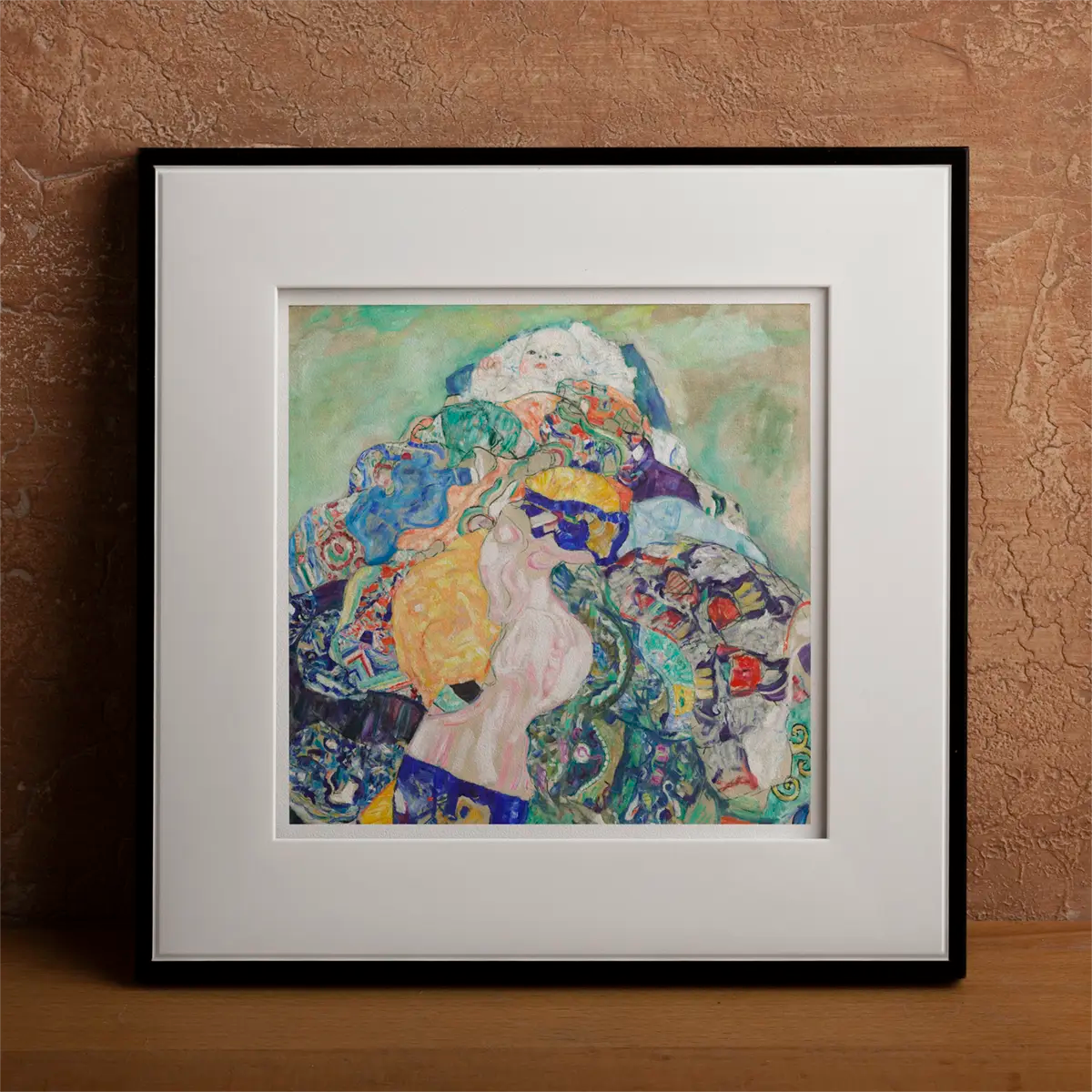
Gustav Klimt entered the world not with fanfare, but with faint thunder. Born on July 14, 1862 in Baumgarten, a modest patch on the outskirts of Vienna, he was the second of seven children cradled in the thin-handed dreams of a struggling family. His father, Ernst Klimt the Elder, etched his living as an engraver, coaxing pattern from metal—laborious, uncelebrated, precise. His mother, Anna, once hoped to sing. The music, like so much else in their home, went unsung.
What Klimt inherited was neither wealth nor ease but something stranger: a reverence for material and a suspicion of simplicity. Gold wasn’t for hoarding—it was for speaking. And silence wasn’t absence—it was the contour of what had not yet found its form.
By fourteen, Gustav’s promise glittered bright enough to earn admission to the Kunstgewerbeschule (School of Applied Arts). He studied architectural painting under Julius Berger, navigating a curriculum of structured grandeur and reverent classicism. The city’s ceilings and corridors would soon know his hand.
In 1883, Klimt joined forces with his brother Ernst and their friend Franz Matsch to form the Künstlercompagnie—a decorative ensemble that served Vienna’s gleaming civic ambitions with murals, panels, and gilded theatrical allegories. Their commissions tracked along the Ringstraße, from the Burgtheater to the Kunsthistorisches Museum, echoing a nation obsessed with its own mythic reflection.
These early works were neoclassical theatre—lavish, obedient, enrobed in historicism. Klimt, the dutiful painter, executed them with the fine edge of a craftsman’s blade. For a time, he played Vienna’s game. And Vienna rewarded him. In 1888, Emperor Franz Josef I bestowed upon him the Golden Order of Merit, a medal heavy with imperial favor. He joined the prestigious ranks of the Universities of Munich and Vienna. Prestige, commissions, recognition—Klimt had earned it all.
But 1892 cut deep. His father died. Then his brother. The house darkened. What bloomed in their absence was a different Klimt: no longer a decorator of noble fictions, but a seeker of haunted truths. Around this time, Emilie Flöge stepped into his life—not just as a muse, but as a gravitational anchor. A designer by profession and a psychic accomplice by disposition, Flöge didn’t temper Klimt’s transformation—she witnessed it.
He did not descend into mourning. He crystallized.
Fin-de-siècle Vienna: the Setting for an Artistic Revolution
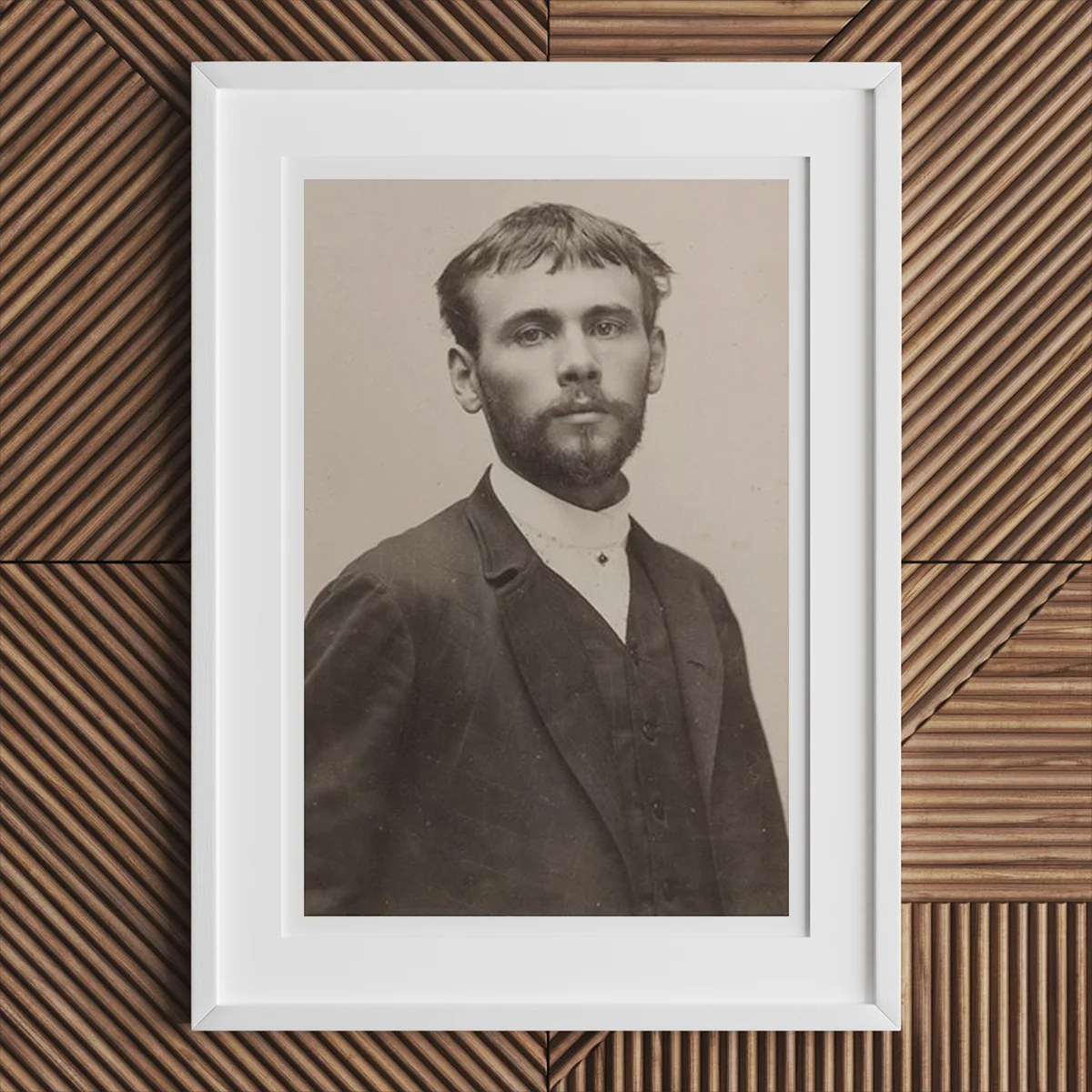
To understand Klimt’s rupture, one must first understand Vienna’s illusion. By the turn of the century, the Austro-Hungarian Empire still strutted in brocade, but beneath the embroidery, the seams were splitting. The city was a gilded petri dish of contradiction: a necropolis in imperial drag. Its salons were velvet-drenched; its hospitals teeming with neurosis. Freud was peeling back the id with a scalpel. Mahler was composing symphonies that trembled on the edge of collapse. Hofmannsthal was writing the death of aristocracy in iambic pentameter.
Klimt’s city was one of masquerade and decay. And in that friction—between glamour and rot, tradition and psychosis—he found his subject.
Art, at this moment, was caught in a tug-of-war between the grandiose inertia of historicism and the electrified unease of modernity. The Association of Austrian Artists policed the walls of the Academy like sentinels of the past. The ideal painting? Heroic. Biblical. Historical. Safe.
But outside those halls, electricity was humming through European cities. The Arts and Crafts movement was resurrecting the sacredness of the handmade. Japanese ukiyo-e prints were flattening perspective into lyric geometry. Nietzsche was whispering of Dionysian disorder.
And so it was inevitable—like a fuse that only needed a match.
In the waning days of the 19th century, a band of restless visionaries—Klimt among them—would burn the academy down (metaphorically, then practically). The transformation was not incremental. It was a break.
Founding the Vienna Secession
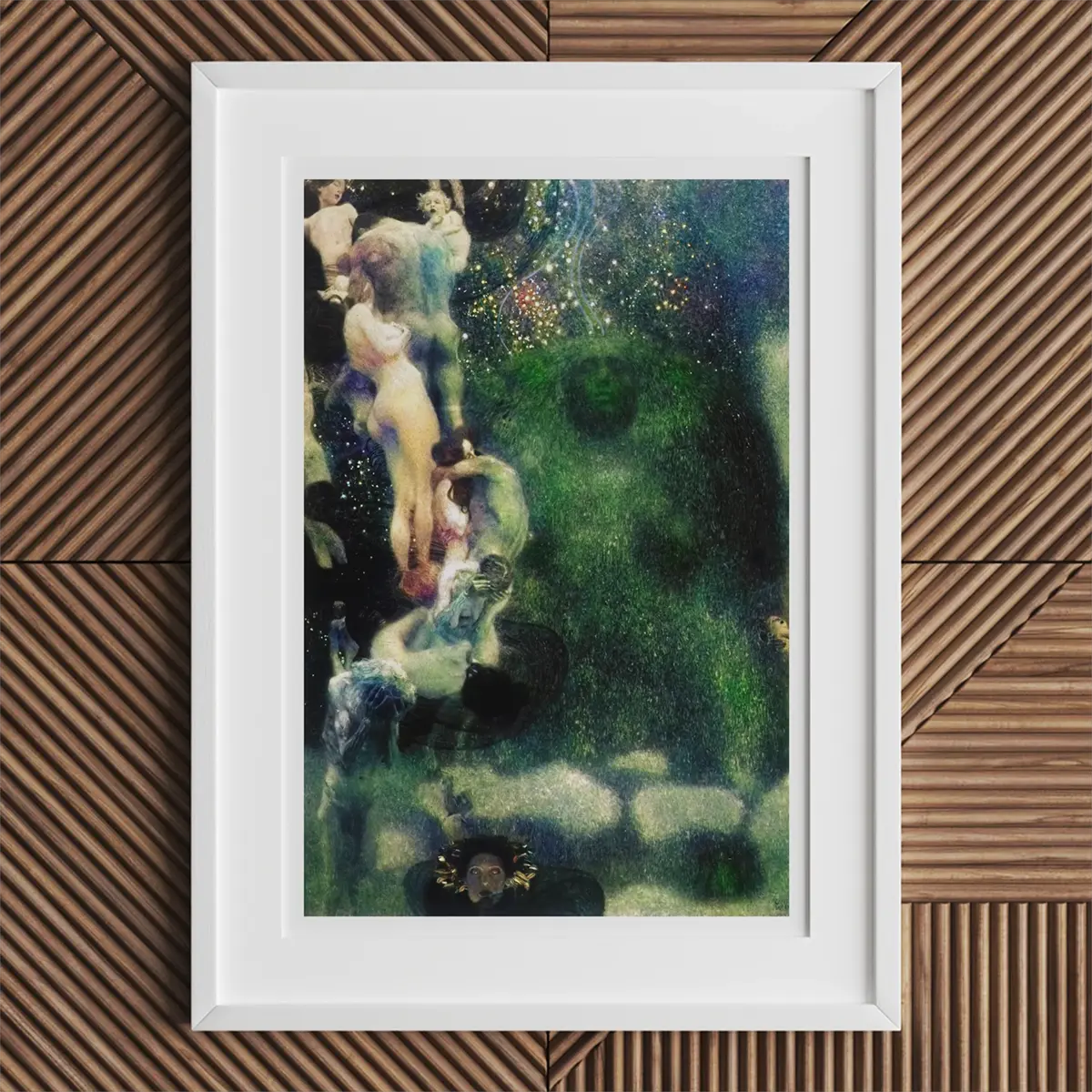
Gustav Klimt, flanked by Koloman Moser, Josef Hoffmann, and Joseph Maria Olbrich, resigned from the Association of Austrian Artists. It wasn’t a schism. It was a divorce—artistic and philosophical. They named their new collective the Vienna Secession (Vereinigung Bildender Künstler Österreichs), and Klimt, unsurprisingly, was its inaugural president.
The movement was electric. It unshackled art from its nationalist, didactic cage and reimagined it as something total, fluid, and international. The Vienna Secession didn’t recognize the hierarchy between painting and architecture, between ornament and utility. Their rallying cry? “To every age its art, to art its freedom.” It was chiseled above the door of their new exhibition space, designed by Olbrich and crowned by a gilded dome of laurel leaves—a botanical crown for an aesthetic republic.
To disseminate their provocations, the group launched Ver Sacrum (“Sacred Spring”), a journal of art and theory—a chrysalis for radical thought. The Secessionists inhaled Art Nouveau and exhaled something stranger: swirling, decadent, erotic, mythic. This was not art as mirror—it was art as oracle.
Klimt thrived. Liberated from academic constraint, he turned the decorative into divination. He pulled influences from Byzantine mosaics, Japanese woodcuts, Symbolist reveries, and Renaissance eroticism—and hybridized them into visual spells.
The Vienna Secession was never about style. It was about sovereignty.
Key Figures of the Vienna Secession
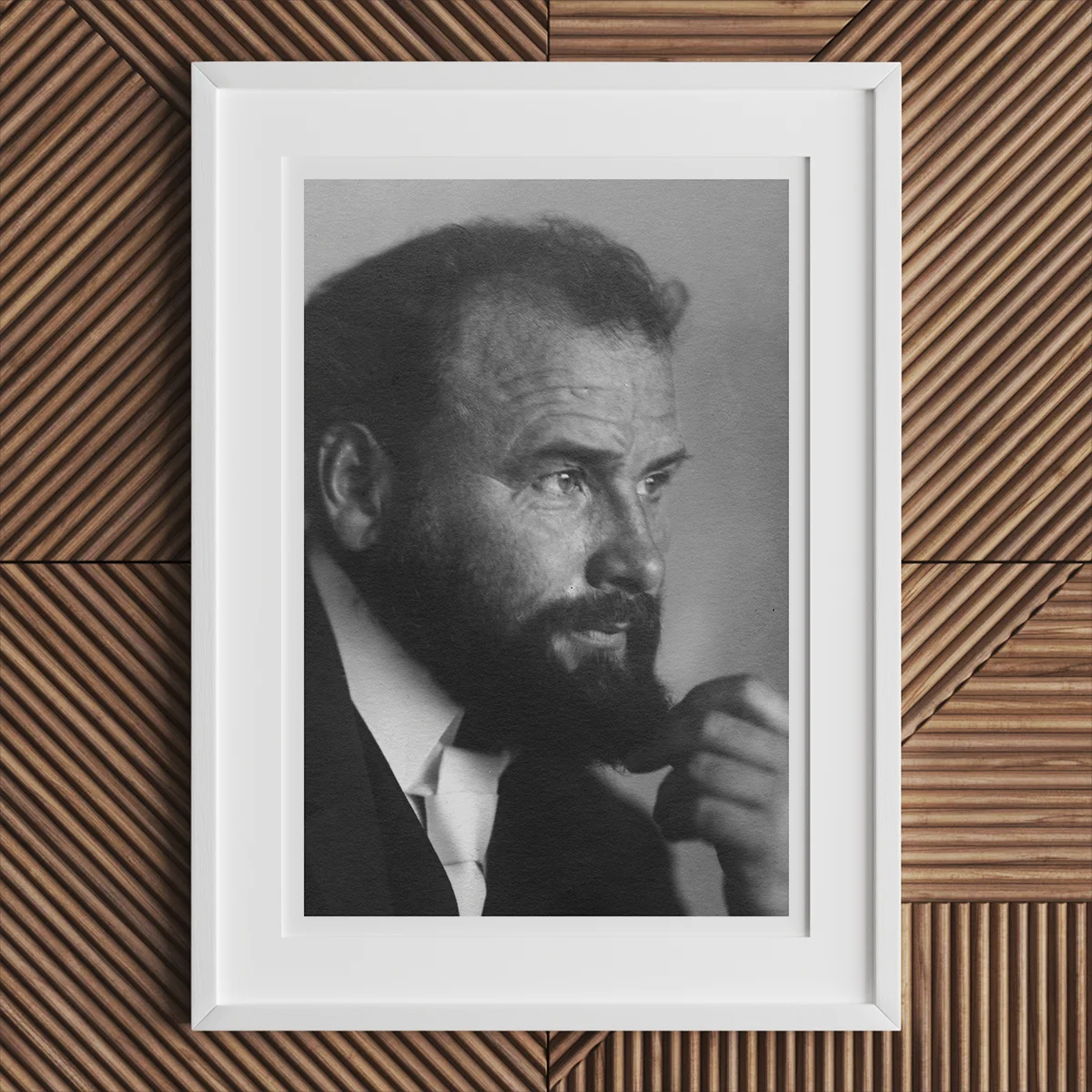
| Individual | Distinguishing Legacy |
|---|---|
| Gustav Klimt | Fostered a luxurious visual language of gold and esoteric symbolism, uniting sensuality with existential depth. |
| Koloman Moser | Excelled in diverse mediums—graphics, jewelry, ceramics, and beyond—enriching the idea of a total work of art. |
| Josef Hoffmann | Architect and designer known for geometric purity, a defining force behind the Wiener Werkstätte collective. |
| Joseph Maria Olbrich | Renowned architect of the Secession Building, testament to the movement’s independent aesthetic agenda. |
| Carl Moll | Influential organizer and painter who later helmed the Secession, emphasizing modernist approaches in his art. |
A Controversial University Commission
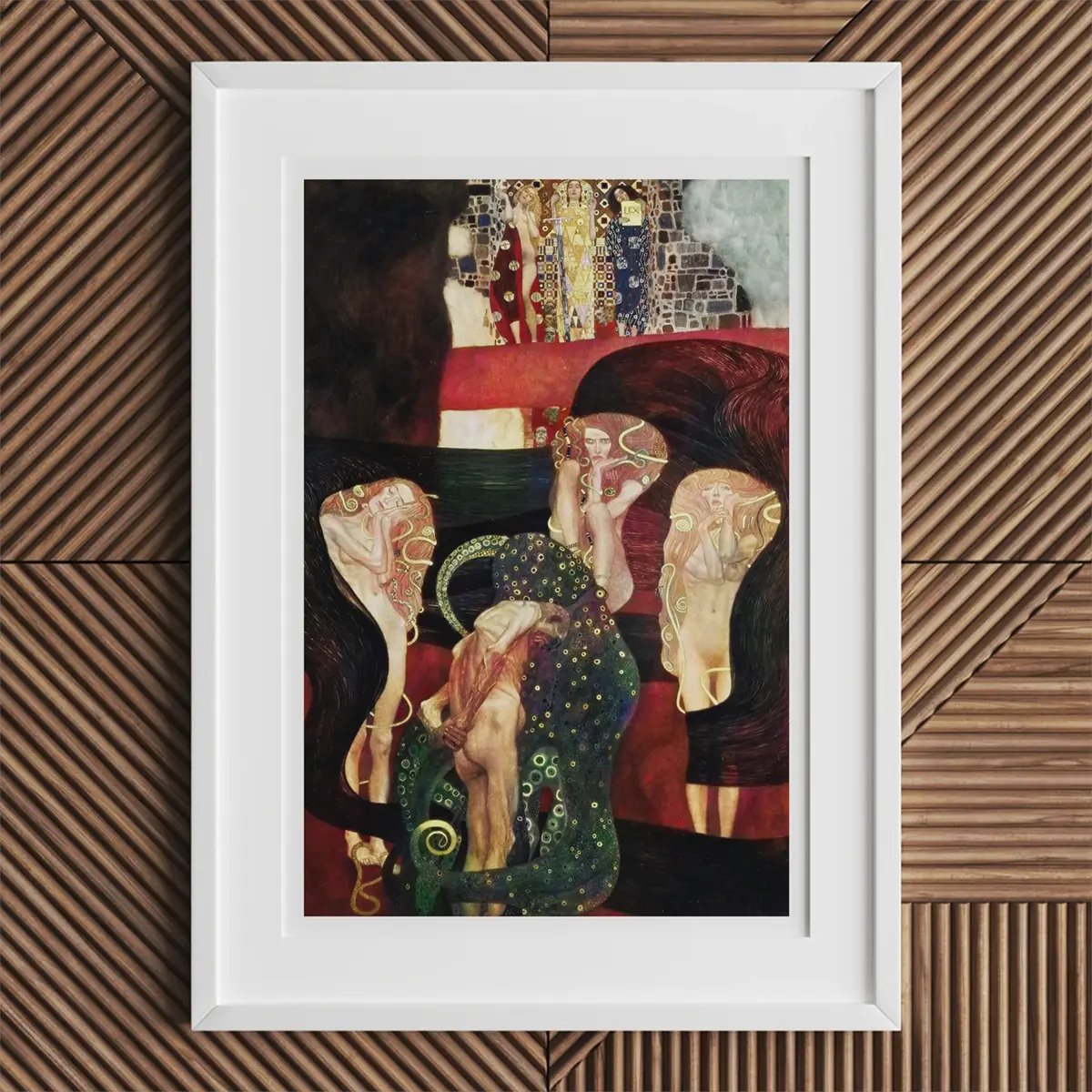
In 1894, long before golden lovers twined into each other’s outlines and before death and desire collapsed into gleaming mosaics, Klimt was handed the reins of a state-sanctioned myth. He and Franz Matsch were commissioned to create ceiling paintings for the Great Hall of the University of Vienna—a series that was meant to glorify three pillars of enlightenment: Philosophy, Medicine, and Jurisprudence.
But Klimt no longer served that empire.
The artist who once gilded history’s heroes now turned his gaze inward, downward, and sideways—toward the liminal, the erotic, the terrifying sublime. When his Philosophy panel debuted in 1900, Vienna shuddered. Gone were the laurels, the celestial muses. In their place: a ghost-lit river of naked bodies spiraling toward oblivion, their faces half-swallowed in existential vertigo. The cosmos yawned behind them like a dream of dissolution. A female figure—part fate, part ether—hovered nearby, too detached to intervene.
Critics and officials recoiled. They saw not illumination, but blasphemy. Where was the rational clarity? Where was man’s triumphant intellect? Klimt had replaced the heroic tableau with a meditation on futility. This was not the Enlightenment. This was the abyss, rendered in oil and defiance.
Then came Medicine. The goddess Hygieia stood statuesque, her serpent coiling like prophecy, while around her, a morass of writhing bodies sagged, aged, contorted. The painting did not exalt science—it challenged it. Medicine, Klimt implied, could not save us from the slow rot of time.
Jurisprudence followed. A trio of Furies tangled the accused in red strands of fate, while a blindfolded figure sat inert, smothered by Kafkaesque paralysis decades before Kafka was even known. The law, Klimt dared to suggest, was no salve. It was a snare.
Vienna’s officials erupted. The works were deemed pornographic, pessimistic, nihilistic, and above all, unacceptable. The Academy, threatened by this baroque revolt, condemned the paintings as an offense to state dignity. Klimt’s provocations were too raw, too nude—both literally and metaphorically.
But not all eyes condemned. The Grand Prix awarded to Philosophy at the Paris World Fair in 1900 proved that outside Austria’s insulated hierarchy, Klimt’s audacity was seen for what it was: revolutionary.
Still, the backlash was unrelenting. Klimt, disillusioned and defiant, returned the commission’s payment and withdrew from the project entirely—a rare and radical act for any artist in imperial employ.
Tragically, the original Faculty Paintings would not survive long into the next century. In 1945, Nazi forces—fleeing through Austria’s Schloss Immendorf—torched the castle holding the works. The fire erased them, leaving only black-and-white photographs, silent negatives of a scandal now smoldered to ash.
Yet even as smoke claimed the originals, their afterlife burned on. The Faculty Paintings marked the precise moment Klimt stepped away from state commissions and into the golden, myth-soaked strangeness of his own private vision.
Klimt’s Golden Period
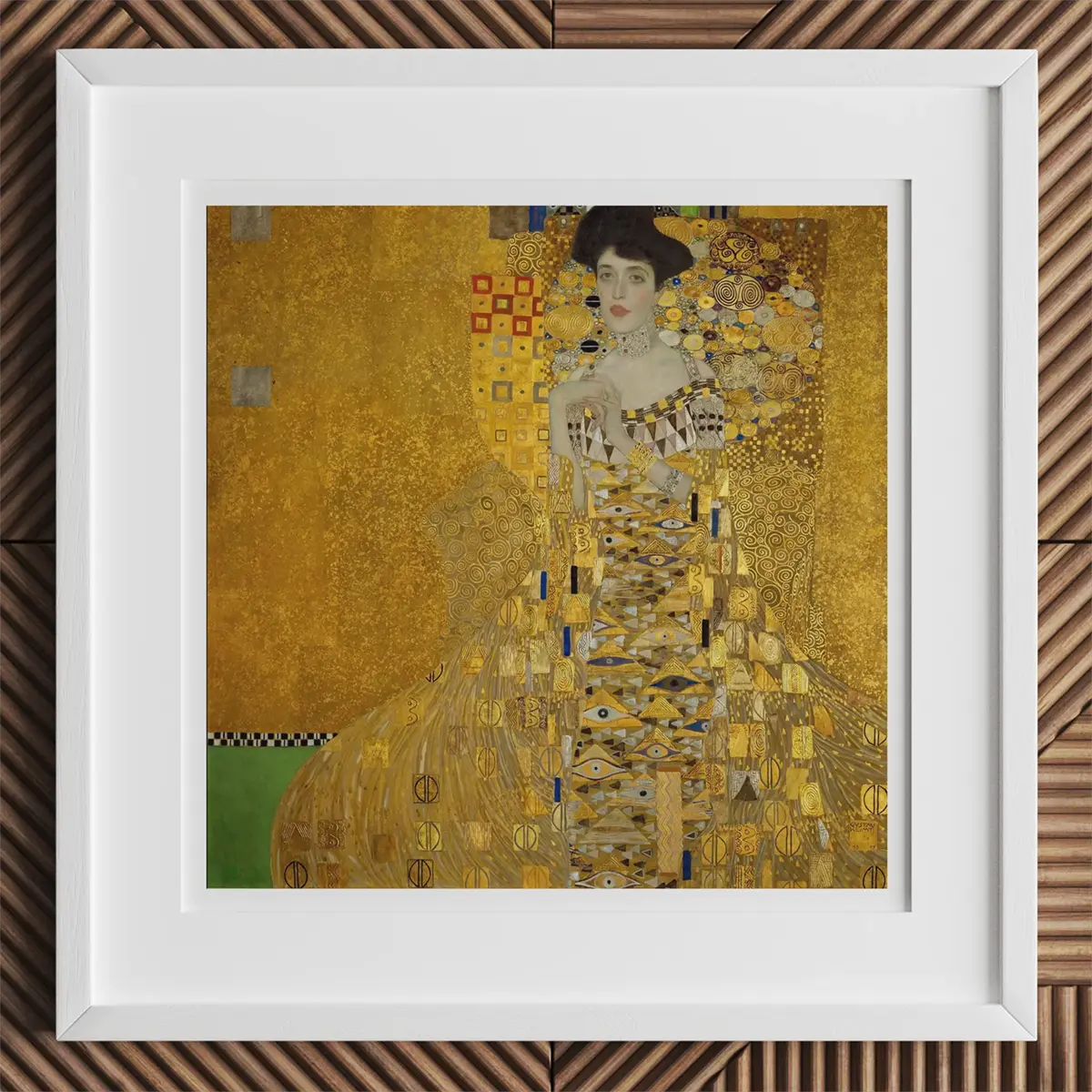
From 1901 to 1909, Klimt entered what critics now label his Golden Period, though it’s better understood as something stranger—a moment when he began painting with precious metal as if it were breath. It wasn’t decorative. It was sacred heresy. Every canvas became an icon, part altarpiece, part fever dream.
The catalyst was twofold. First, Klimt’s excursions to Ravenna and Venice, where he encountered the Byzantine mosaics—gilded saints staring wide-eyed from domed cathedrals. Second, the steady intensification of his symbolic language: not just eroticism, but cosmology; not just beauty, but entrapment.
Gold became his signature—not for ostentation, but for its alchemical tension between permanence and illusion. With sheets of gold leaf, he transformed flatness into depth, light into cipher. Figures emerged from pattern like ghosts from the veil, tangled in geometric filigree, spiraling vines, and eyes that watched from the borders like Egyptian gods or modern surveillance.
Desire surged to the center. The female body, long idealized in art history, was now painted not as muse, but as mystery. Klimt’s women were not passive vessels. They were oracles of erotic intelligence. Their nudity was not ornamental—it was loaded, knowing, and lit from within by pleasure’s paradoxes.
Psychoanalysis—still embryonic but bubbling through the Viennese air—offered new metaphors for the interior self. Klimt, ever attuned to subterranean tremors, responded with art that placed sexuality, death, and consciousness into the same gilded frame. The result was a visual lexicon of both desire and dissolution.
To gaze at a Klimt painting from this era is to stand at the edge of a jewel-encrusted cliff—seduced, destabilized, and dazzled all at once.
Masterpieces of the Golden Period
The crown jewel of Klimt’s golden oeuvre remains The Kiss (1907–1908), a work so saturated in visual cliché it’s easy to forget how shocking it once was. The lovers cling to each other on the brink of a flowered abyss, their forms swallowed by an aureate shroud that merges skin with cosmos. Are they ascending or dissolving? Ecstasy or obliteration? Their lips may meet, but the true union happens in the gold.
Some scholars read the painting as autobiographical. The female figure resembles Emilie Flöge, Klimt’s lifelong companion. If so, the painting offers a kind of metaphysical marriage—not legal, not performative, but eternal in gilt.
Just months prior, Klimt unveiled the Portrait of Adele Bloch-Bauer I (1907)—a canvas now infamous for its beauty and its legal odyssey. Adele, adorned in a mosaic of gold and silver leaf, gazes out with a composure that belies the abstraction enveloping her. She is not simply painted—she is enshrined. Her pose echoes Byzantine icons, but the detailing is psycho-erotic: eyes embedded in her robe, serpentine symbols coiling around her shoulders.
The painting’s fate mirrors Austria’s history. Looted by the Nazis, absorbed into state holdings, and finally returned after a protracted court battle in the early 2000s, the portrait now resides in New York’s Neue Galerie, where it is known not only as a masterpiece, but as a symbol of cultural restitution.
Klimt’s golden explorations didn’t stop at devotion. He turned toward mortality in Death and Life (1910–1915), a composition that splits the canvas between death’s cloaked form and a communal tangle of bodies representing life. The living are colorful, interlaced, oblivious. Death hovers, unflinching. The message is simple and unbearable: we celebrate, we decay.
In The Three Ages of Woman (1905), a nude crone clutches a newborn while a mother figure stands, eyes closed, caught between generations. The work renders time as vertical—birth, bloom, and withering not as steps, but as cohabiting truths.
In Danaë (1907), Klimt plunges into mythology. Zeus, in his golden rain form, cascades over the sleeping woman’s thighs. Her posture is one of surrender and rapture. The scene is less about divine visitation and more about the entanglement of ecstasy, power, and fate.
These paintings don’t shimmer for beauty’s sake. They shimmer because they know too much.
Themes and Symbolism
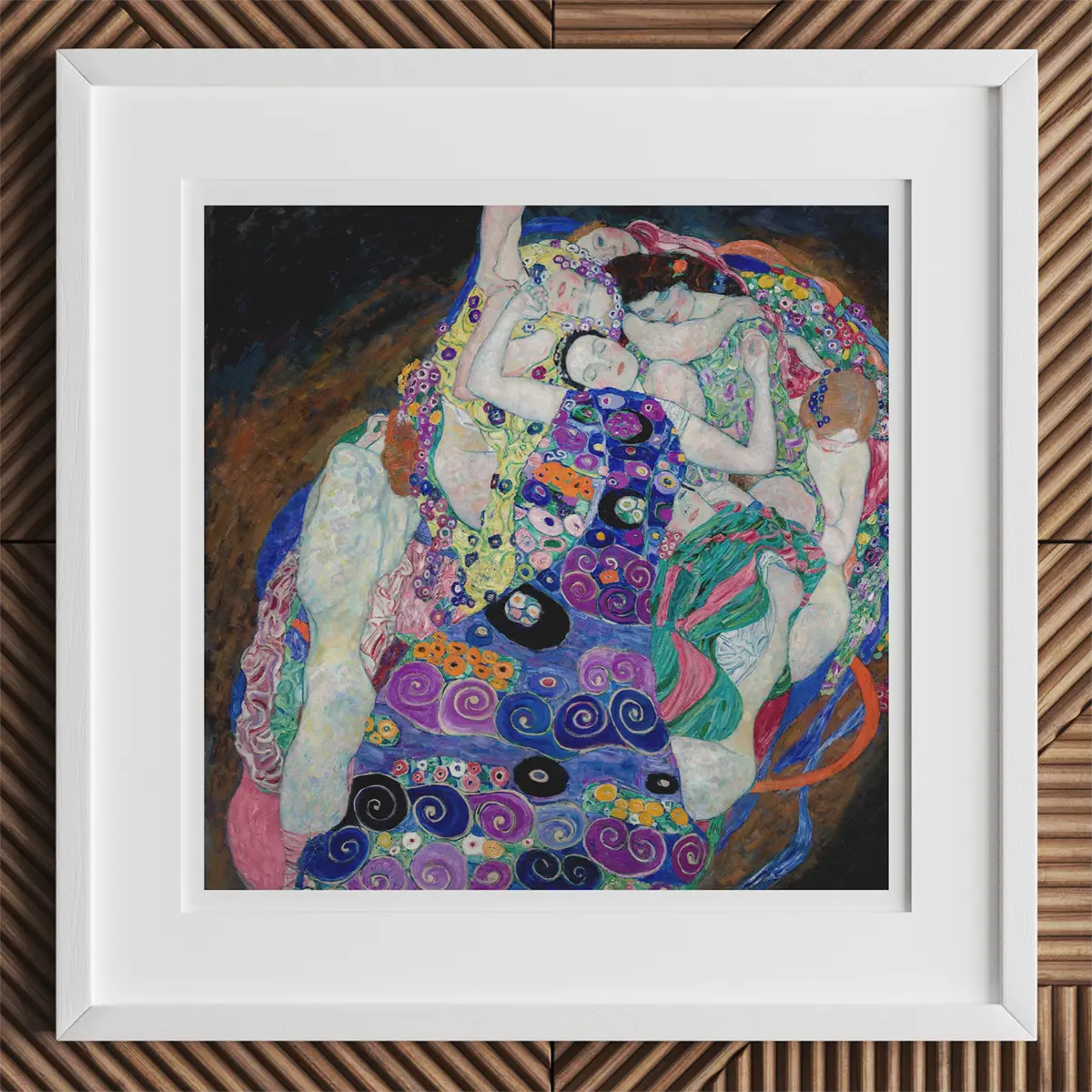
To catalog Klimt’s symbols is to wade through a lexicon of erotic geometry and existential allegory. But at the heart of it all lies a simple compulsion: the human urge to be consumed and remembered at once.
He once said, “All art is erotic.” This wasn’t provocation. It was conviction. To Klimt, ornament was never neutral. Every spiral, every gilded grid, every upturned gaze was a cipher for longing. His canvases thrummed with the unspoken. Desire wasn’t just painted—it was encrypted.
Eroticism in Klimt’s work is neither moralized nor euphemized. His figures are lovers and symbols simultaneously. They float in half-formed dreams, bodies arched, eyes closed, limbs overlapping like phrases in a forgotten language. Yet sex, for Klimt, was never just a metaphor for pleasure. It was a stand-in for the eternal: creation, annihilation, transcendence, and return.
Running parallel to desire is decay. Klimt did not shy from death, nor did he confine it to grim shadows. Death, in his hands, is both lover and witness—ever-present, gilded in dignity and inevitability. In Death and Life, in The Three Ages of Woman, in the unseen hands of fate that glide through his panels, mortality is not antithetical to beauty. It is its condition.
And woman—her myth, her flesh, her unknowable psyche—remains Klimt’s central axis. His women are never passive. They are goddesses, sirens, sphinxes. Their power is magnetic, ambiguous, dangerous. In Judith I, she holds Holofernes’ head like a trophy and wears her sexuality like an executioner’s mask. In Hope II, a pregnant figure bows her head while death encircles her belly, turning maternity into an act of terror and grace.
Klimt didn’t paint femininity. He painted the ritual of becoming.
Women in Klimt’s Life
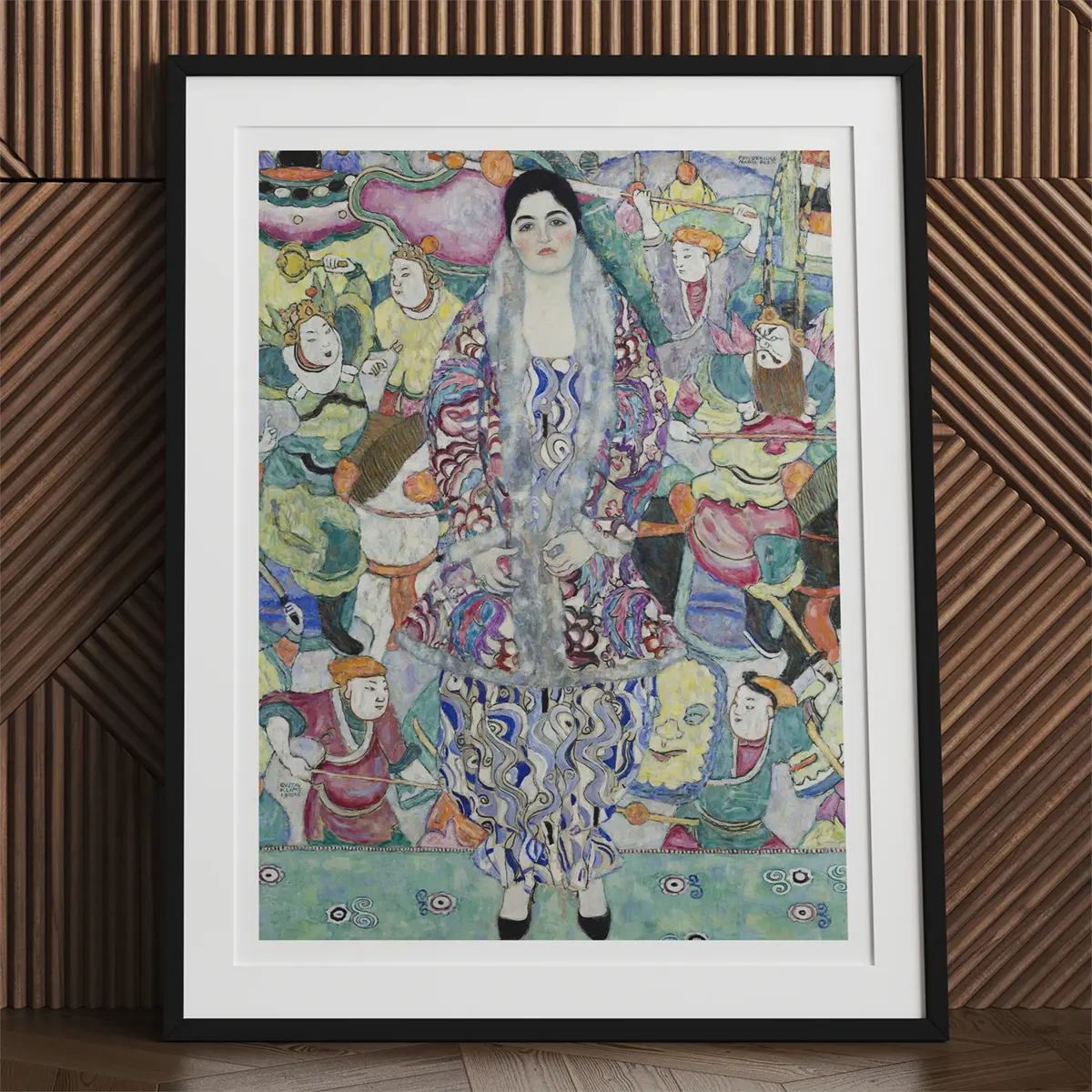
To speak of Gustav Klimt without speaking of the women in his life is to miss the pulse beneath the gilt. His studio was not a sanctum of solitude but a revolving salon of female presence—muses, patrons, lovers, enigmas—each shimmering through his art like motifs reoccurring in gold tesserae. They were not inspirations; they were interlocutors. Their bodies, minds, and textiles became the architecture through which Klimt reimagined modern femininity.
Emilie Flöge sat at the center of this orbit—not as a wife, for Klimt never married, but as something more mutable, more enduring. A fashion designer, she was radical in her own right. She co-founded the haute couture salon Schwestern Flöge, where she designed flowing, unrepressive garments that defied corsetry and conventional silhouettes. Klimt did not merely paint her—he inhaled her aesthetic vocabulary. The robes, the ornamental lines, the refusal of constraint: all echoed in his canvases.
Their partnership was symbiotic. She offered fabrics that draped rather than dictated; he offered iconography that gleamed instead of obeyed. Some see her in The Kiss, though Klimt never confirmed. Their bond—documented in hundreds of letters—was devotional without name, erotic without demand. Where others saw scandal, they saw alignment.
Then there was Adele Bloch-Bauer—aristocrat, art patron, and the only woman Klimt painted twice in full portrait. She was the socialite that Vienna’s salons revolved around, but also a woman who channeled wealth into patronage, and rumor into mystique. Her first portrait (1907) rendered her not in flesh, but in iconography: tessellated, sanctified, dissolving into pattern. The second, more restrained, still shimmered with intimacy.
Adele’s influence extended beyond posing. She was part of the Jewish bourgeoisie that nourished Secessionist modernism—an intellectual class that chafed against both traditionalism and antisemitic exclusion. Her support wasn’t just social; it was political. Through her, Klimt gained not just access, but the freedom to unmoor himself from the state and sail toward private mythology.
Klimt’s muses were never blank slates. Each portrait bears the mark of negotiation—between sitter and painter, self and symbol. Szerena Lederer, Mäda Primavesi, Margarethe Stonborough-Wittgenstein—each entered the frame not as ornament, but as code. Klimt offered power and pattern; they offered presence and poise.
Yet Klimt’s most enduring figure wasn’t any one woman—it was the archetype of the woman as mythic threshold. His paintings seethe with femme fatales—dangerous, knowing, dripping with both seduction and consequence. In Judith I, her gaze is triumphant, almost amused, as she clasps Holofernes’ severed head. She is not ashamed. She is saturated with erotic agency.
And in Danaë, drenched in Zeus’s golden descent, the woman is a vessel of divine pleasure and cosmic violation—folded into herself, ecstatic, inaccessible. She isn’t conquered. She is the storm.
These women weren’t Klimt’s subjects. They were his syntax.
Seminal Klimt Pieces
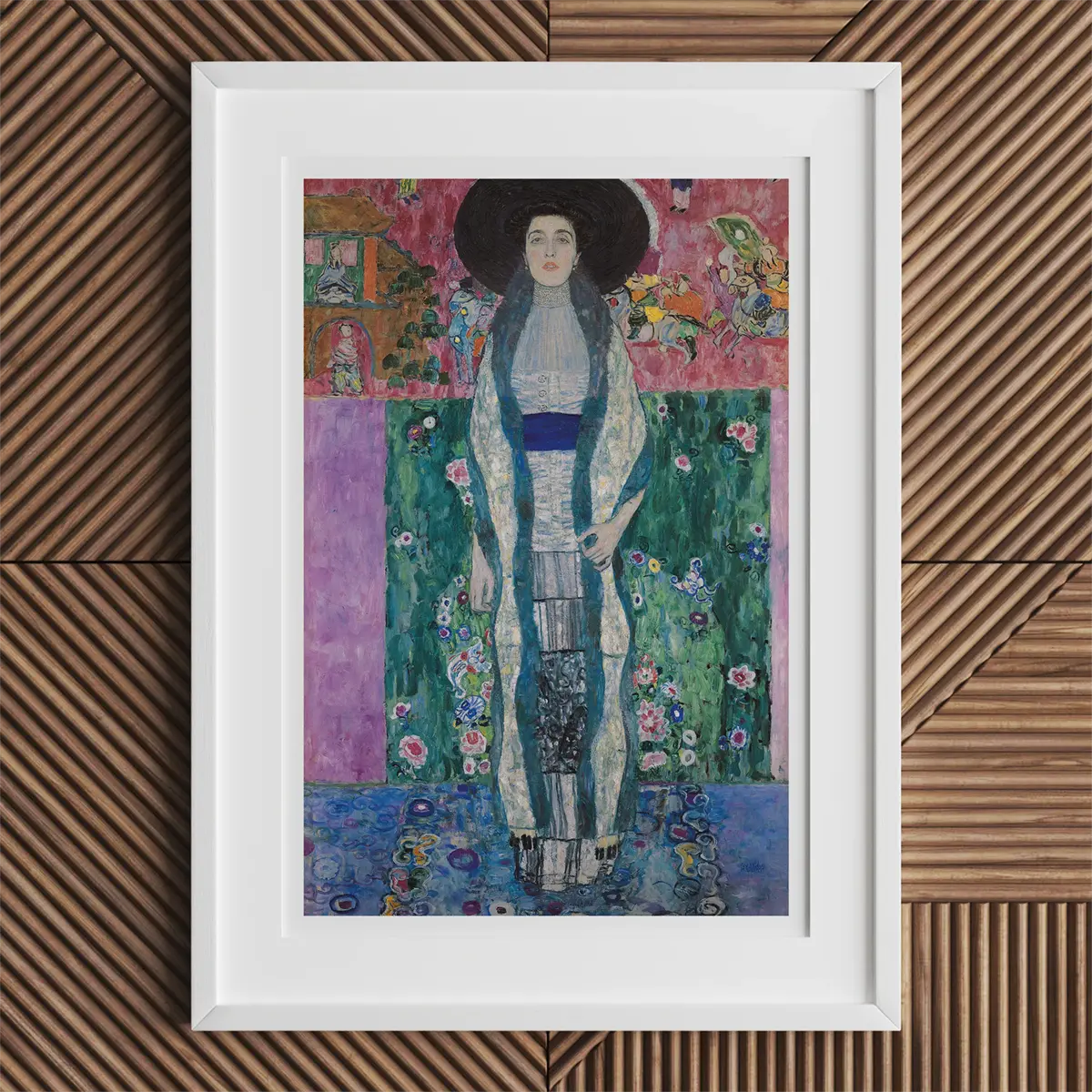
| Creation | Hallmarks and Underlying Themes |
|---|---|
| Judith I (1901) | An early foray into golden ornamentation, channeling the biblical heroine’s raw force and sensual daring. |
| Portrait of Adele Bloch-Bauer I (1907) | A pinnacle of his gilded style, with layers of metallic sheen merging portraiture and the aura of a Byzantine icon. |
| The Kiss (1907–1908) | Icon of fervent union, enveloped by resplendent gold leaf, representing the dual nature of intimacy and the sacred. |
| Hope II (1907–1908) | A grand composition in which a pregnant figure conveys themes of genesis, fragility, and humanity’s uncertain future. |
| Danaë (1907) | Mythic narrative entwined with sumptuous eroticism, gold shimmering as both literal embellishment and potent metaphor. |
| The Three Ages of Woman (1905) | A meditation on life’s arc, charting infancy to old age through overlapping figures and rich symbolic patterns. |
| Death and Life (1910–1911) | Confronts mortality head-on, framing a vibrant mosaic of living souls in stark opposition to a solemn embodiment of death. |
Klimt’s Legacy and Influence
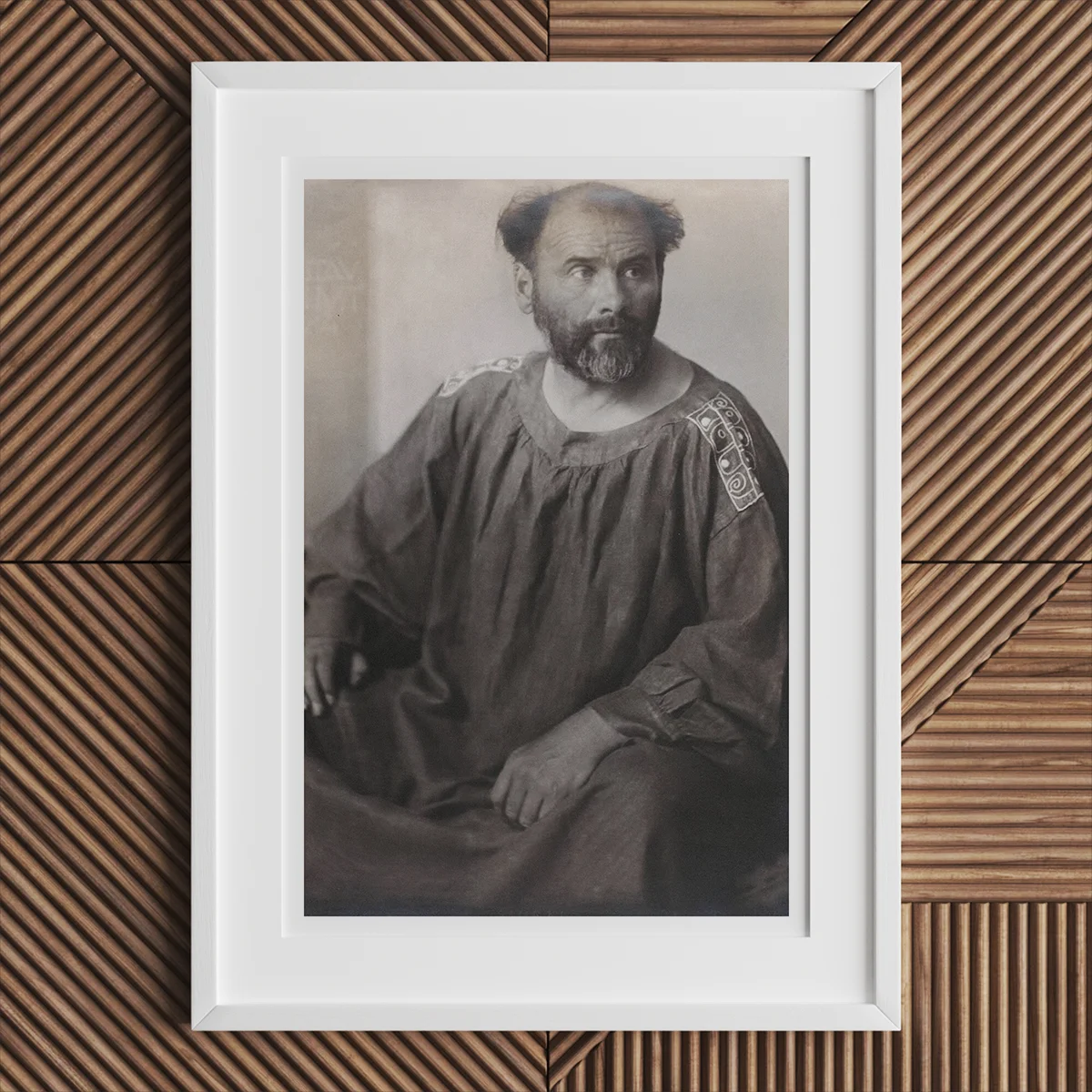
To measure Klimt’s legacy, one must not just trace his successors but chart the fault lines he carved through Europe’s cultural consciousness. His gilded aesthetic, so often caricatured as opulence, was in fact a dismantling device—a way of melting old ideologies into molten sensuality.
As a founder of the Vienna Secession, Klimt stood not as a solitary genius, but as a conduit: a channel through which Symbolism and Art Nouveau surged into the visual vernacular of the Austro-Hungarian avant-garde. His work catalyzed the Secession’s ethos of total art—Gesamtkunstwerk—where architecture, design, and painting were not separate domains but interwoven rituals.
This ethos birthed the Wiener Werkstätte, where functional objects—tables, wallpaper, candlesticks—became sacred geometry. The boundary between art and life collapsed. Klimt didn’t just influence painting; he helped rewire how a society understood the decorative.
His influence radiated forward, too. Egon Schiele—Klimt’s most direct heir—took his mentor’s focus on the naked psyche and stripped it further, exposing sinew, hysteria, and spiritual rupture. Oskar Kokoschka pushed the emotional interior even harder, birthing Expressionism as a howl from beneath the gilt.
But Klimt’s impact wasn’t only stylistic. He altered the emotional permissions of art. He proved that eroticism and mysticism, ornament and existential depth, could not only coexist—they could amplify each other. He painted the sacred in the sensual, and in doing so, cracked open the 20th century’s floodgates.
Klimt died in 1918, just months before the Habsburg dynasty dissolved under the pressures of war and modernity. His death marked more than personal loss—it signaled the collapse of the very empire he had both gilded and unmasked.
But Klimt did not vanish into academic citation. He metastasized.
Today, his works anchor the Belvedere Museum in Vienna, where The Kiss remains its most visited and photographed icon—an image so ubiquitous it risks losing its fangs. Yet to stand before it, in its full gilded violence, is to be reminded: this is not a love story. It’s a rite.
At the Neue Galerie in New York, Portrait of Adele Bloch-Bauer I stands as both painting and artifact, its return from Nazi seizure a symbol of historical redress. The legal battle to reclaim it—and the film that dramatized it, Woman in Gold—have turned the portrait into a cultural mnemonic, a canvas upon which restitution, memory, and trauma are still being negotiated.
And Klimt’s fingerprints stretch even further—through fashion, where designers from Alexander McQueen to Rodarte echo his motifs in pleats and embellishments; through cinema, where directors frame bodies in lush, symmetrical mise-en-scène; through contemporary art, where gold is no longer taboo, but re-purposed for irony, opulence, or spiritual reclamation.
Final Reflections
Klimt’s art seduces and estranges. It offers surfaces you want to touch and depths you’d rather not. He forces the viewer to ask: is this beautiful because it comforts, or because it destabilizes?
His genius lay not in execution alone but in friction—between flatness and volume, abstraction and figure, purity and transgression. Klimt wasn’t merely painting portraits or illustrating myths. He was performing autopsies of ideology—using gold as scalpel and desire as lens.
His refusal to marry, to join the Academy, to obey public taste, to edit his eroticism, or to settle for symmetry without tension—each of these became part of the Klimt mythos. But unlike so many artists enshrined in heroic biography, Klimt remains elusive. No manifestos. No diaries. Just the work—and the questions it leaves behind.
What does it mean to ornament pain? What is the function of erotic symbolism in an age of repression? Can art console while confronting mortality without illusion?
Klimt didn’t answer. He adorned.
And in doing so, he built a visual theology of bodies entangled, of time gilded and stilled, of death gazing without cruelty and life glittering with hunger.
Reading List
- Bahr, H. (1903). Gegen Klimt. Vienna.
- Bitsori, M., & Galanakis, E. (2002). Doctors versus artists: Gustav Klimt's Medicine. BMJ, 325(7378), 1506–1508.
- Buchwald, J. Z. (2016). Politics, morality, innovation, and misrepresentation in physical science and technology. Physics in Perspective, 18, 283–300.
- Calaprice, A. (2000). The Expanded Quotable Einstein. Princeton University Press.
- Constantino, M. (1998). Klimt. Knickerbocker Press.
- Finn, B. C., Bruetman, J. E., & Young, P. (2013). Gustav Klimt (1862-1918) y su cuadro sobre la medicina. Revista Médica De Chile, 141, 1584–1588.
- Fliedl, G. (1998). Gustav Klimt. Benedikt Taschen Verlag.
- Freud, S. (1900). The Interpretation of Dreams. Random House.
- Gay, P. (1988). Freud: A Life for Our Times. W W Norton.
- Grist, N. R. (1979). Pandemic influenza 1918. BMJ, 20(6205), 199.
- Hofmann, W. (1972). Gustav Klimt. New York Graphic Society.
- Kandel, E. R. (2012). The Quest to Understand the Unconscious in Art, Mind, and Brain, From Vienna 1900 to the Present. Random House.
- Koschatzky, W., & Strobl, A. (1970). Die Albertina in Wien. Residenz Verlag.
- Mellilo, J., Richmond, T., & Yohe, G. (2014). Climate change impacts in the United States. The Third National Climate Assessment.
- Nebehay, C. (1969). Gustav Klimt: Zeichnungen und Dokumentation (Katalog XV). Vienna.
- Pirchan, E. (1956). Gustav Klimt. Ein Künstler aus Wien. Vienna.
- Rentetzi, M. (2004). The city as a context for scientific activity: Creating the Mediziner-Viertel in fin-de-siècle Vienna. Endeavour, 28, 39–44.
- Schorske, C. E. (1981). Fin-de-siècle Vienna: Politics and Culture. Vintage Books.
- Seebacher, F. (2006). The case of Ernst Wilhelm Brücke versus Joseph Hyrtl – The Viennese Medical School quarrel concerning scientific and political traditions. In B. Hoppe (Ed.), Controversies and Disputes in Life Sciences in the 19th and 20th Centuries (Cancer Prevention & Control, 2(1), 7–14.
- Seyfarth, E. A., & Zottoli, S. J. (1991). Ludwig Mauthner (1840-1894): Neuroanatomist and noted ophthalmologist in fin-de-siècle Vienna. Brain, Behavior and Evolution, 37, 252–259.
- Stern, F. (1986). Einstein and Germany. Physics Today, 39(2), 40–49.
- Vergo, P. (1978/79). Gustav Klimts Philosophie und das Programm der Universitätgemälde. Mitteilungen der Österreichischen Galerie, 22/23, 69-100.
- Wertheimer, M. (1945). Productive Thinking. Harper.
- White, R. (2006). The Study of Lives: Essays on Personality in Honor of Henry a Murray. Atherton Press.
- Whitford, F. (1990)Journal of Personality and Social Psychology, 37(1), 87–96.
- Wyklicky, H. (1983). Prima inter pares. Internal medicine in Vienna at the beginning of the 20th century. Wien Klin Wochenschr, 95, 601–606.















